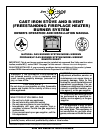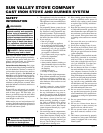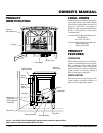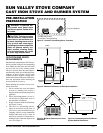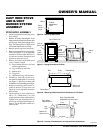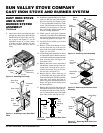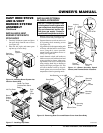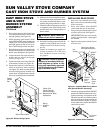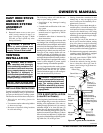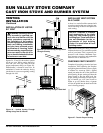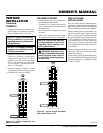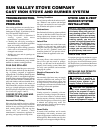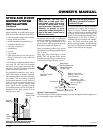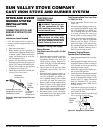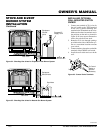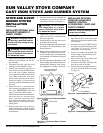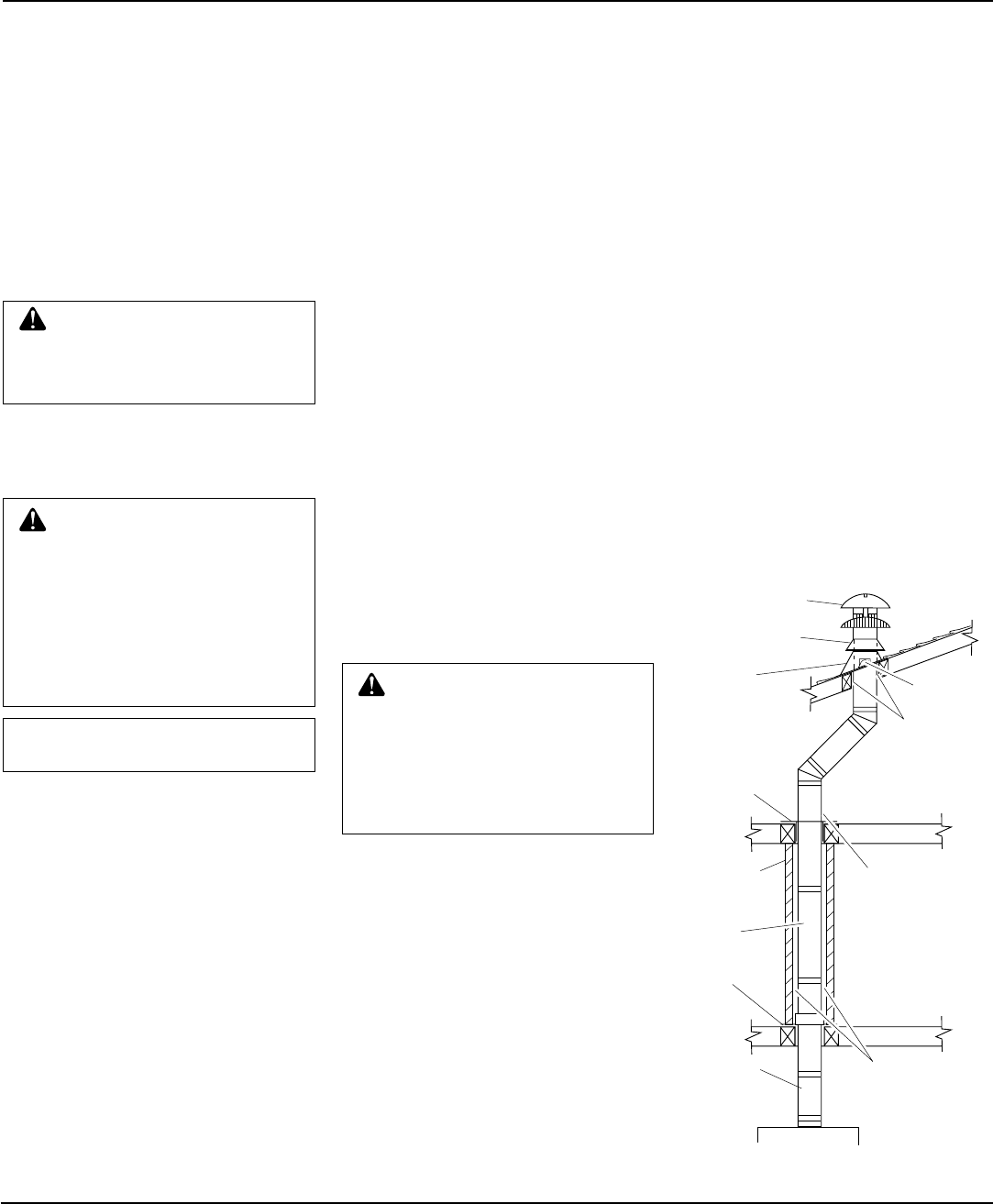
9
106706
OWNER’S MANUAL
For more information, visit www.desatech.com
CAST IRON STOVE
AND B-VENT
BURNER SYSTEM
ASSEMBLY
Continued
WARNING: A qualified in-
staller or service person must
connect burner system to gas
supply. Follow all local codes.
INSTALLATION PRECAUTIONS
Consult local building codes before begin-
ning the installation. Only a qualified ser-
vice person should install venting system.
The installer must follow these safety rules:
• Wear gloves and safety glasses for
protection
• Use extreme caution when using ladders
or when on roof tops
• Be aware of electrical wiring locations
in walls and ceilings
VENTING
INSTALLATION
WARNING: Read all instruc-
tions completely and thoroughly
before attempting installation. Fail-
ure to do so could result in serious
injury, property damage, or loss of
life. Operation of improperly in-
stalled and maintained venting sys-
tem could result in serious injury,
property damage, or loss of life.
NOTICE: Failure to follow these
instructions will void the warranty.
Continued
6. Reattach bottom cover to rear cover
with 8 screws removed in step 2 on
page 8 (see Figure 18, page 7). Make
sure that you don’t pinch any wires
during reassembly.
Figure 23 - Typical B-Vent Installation
Round Top
Storm Collar
Flashing
Roof
Support
25mm (1")
Clearance to
Combustible
Material
Firestop
Spacer
Keep Electrical
Wires and Building
Insulation Away
from Gas Vent and
Out of the Required
Air Space
Enclosure
Wall
Gas Vent
Length
25mm (1")
Clearance to
Combustibles
Support
Plate
Adjustable
Length
• Venting instruction contained in this
manual may or may not apply to your
area. Consult your local authority for re-
quirement in your area.
• Where the gas vent extends through ac-
cessible spaces, it should be enclosed to
avoid personal contact and damage. En-
closure walls should have a fire rating
equal to or greater than the floors through
which the gas vent passes except in single
or two-family dwellings.
• Situate the gas vent in the structure so
that it can be installed without cutting
joists, sills, plates, or major load bearing
partitions or members. It is also impor-
tant to locate the base of the gas vent as
near as possible to the heating appliance.
• This heater must be properly connected to
a venting system. This heater is equipped
with a vent safety shutoff system.
• Use only vents labeled "FOR EXTE-
RIOR USE" above the roofline.
• Consult the authority having jurisdic-
tion to select the correct gas vent di-
ameter. Avoid using a larger than nec-
essary diameter.
The following actions will void the war-
ranty on your venting system:
• Installation of any damaged venting
component
• Unauthorized modification of the vent-
ing system
• Installation of any component part not
manufactured or approved by DESA
International
• Installation other than as instructed by
these instructions
Your burner system is approved for use with
any listed gas vent. A listed gas vent is a factory
made and listed system designed, and installed
exclusively for removing products of combus-
tion, excess air, and dilution air resulting from
burning fuel gas. Metal vents, the most com-
mon type of vent, employ double wall con-
struction enclosing an insulating air space.
This air space both helps keep flue gases warm
and reduce heat transferred to nearby combus-
tibles. This appliance is equipped with a safety
control system designed to protect against
improper venting of combustion products.
It is very important that the venting system
maintain its balance between the combus-
tion air intake and the flue gas exhaust.
Certain limitations apply to vent configura-
tions and must be strictly followed.
WARNING: This gas stove with
burner system and vent assembly
must be vented directly to the out-
side. The venting system must
NEVER be attached to a chimney
serving a separate solid fuel burn-
ing appliance.
TYPE B-VENT INSTALLATION
(Listed B-0 or Greater)
Before beginning installation be sure that the
overall height and gas vent size conform to
building code requirements. Gas vents ex-
tending through pitched roofs can extend a
minimum height of at least 600 mm (2')
higher than any obstruction within 3m (10').
Gas vents extending through flat roofs are
required to extend at least 600 mm (2') above
the roof and at least 600 mm (2') higher than
any portion of the building or adjoining build-
ing within 3m (10') of the gas vent.



